Breakthrough delivers lamb eating quality predictor
Dual energy x-ray absorptiometer (DEXA) systems are already delivering value to the Australian lamb industry – from measuring lean meat yield to enabling robotic cutting.
Now, however, breakthrough research led by Murdoch University in partnership with Meat & Livestock Australia (MLA), suggests DEXA may also be a powerful, independent predictor of lamb eating quality.
With six systems currently installed in Australia – accounting for more than 50% of lambs processed annually – this discovery could help evolve the Meat Standards Australia (MSA) sheepmeat model and strengthen the case for integrating objective measurement technologies into commercial grading systems.
Sharper grading, better eating
According to MLA’s Supply Chain Technology Program Manager Jack Cook, the study analysed DEXA scans alongside consumer sensory data from four flocks. It revealed a consistent negative correlation between DEXA bone R and MQ4 scores* – especially in loin, rack, and hindquarter cuts.
“Crucially, this relationship held even when accounting for hot carcase weight, intramuscular fat, and lean percentage,” he said.
“These findings indicate DEXA bone R captures unique variation in eating quality.
“The strongest effects were seen in loin grills, rack cutlet roasts and eye of rack grills, with additional impacts in outside, rump, and topside grills.
“This consistency supports the use of DEXA bone R to underpin premium lamb brands with objective, verifiable quality claims.”
Aligning technology with market needs
With DEXA bone R’s ability to sharpen eating quality predictions, Jack said the device will enable the industry to better align products with market expectations.
“By integrating DEXA bone R into the MSA model, processors can more accurately predict consumer satisfaction and tailor products to specific market needs,” Jack said.
“This trait adds a new layer of precision to grading, helping ensure consistency and transparency across the supply chain.
“It also builds on other sheepmeat objective measurement devices MLA is investing in to advance traits such as intramuscular fat and lean meat yield.”
According to Jack, one of the most powerful aspects of this work is that it was undertaken using DEXA systems already commercially installed in abattoirs in WA (Western Australian Meat Marketing Cooperative), and NSW (Gundagai Meat Processors) – enabling research outcomes to be rapidly deployed through sites already using the technology.
Professor Graham Gardner from Murdoch University and Chair of the Industry Calibration Working Group said the research may also provide further opportunity for the development of a premium lamb brand.
“While not yet proven, DEXA bone R may function similarly to ossification in beef, potentially acting as a proxy for age and maturity.
“This could ultimately open the door to identifying premium eating quality beyond the traditional lamb category.”
Next steps for industry adoption
To formally recognise DEXA bone R within the AUS-MEAT language, further multi-site trials are required.
Jack said MLA will soon commence this work, focusing on diverse age classes and standardised slaughter conditions, with aim to unlock even more value for the Australian sheep industry.
*MQ4 scores relate to ratings of tenderness, juiciness, flavour liking and overall liking.



